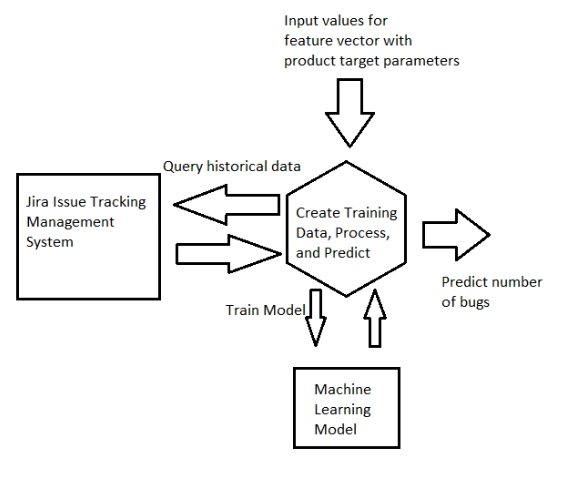How many bugs are left in the code? Where are they? These are the questions that software developers and project managers ask themselves when they are getting close to release applications. In this article, Faisal Qureshi explains how you can perform risk analysis and gauge the quality of software products in development using Hourglass Bug Predictor.
Author: Faisal Qureshi, Hourglass Software, http://www.hourglass-software.com/
What is Hourglass Bug Predictor
Imagine you are developing a new product and you are in a crunch period where every day and resource you have must be used wisely. You also want to make sure the product is released with the highest quality and defect free. Throughout the development, defects have found, but also resolved. You do not have enough time or resources to do a full test pass and need to choose your regression suite effectively. How do you do this? What metrics are you using to determine where there is a higher probability to find those last few remaining bugs? Hourglass Bug Predictor is designed to not only aid in these types of scenarios, but to address quality assessment throughout the development lifecycle. By using Hourglass Bug Predictor, you can efficiently allocate time and QA resources to the right areas of the product to test to ensure you are cost-effective and maintain a high quality bar.
Hourglass Bug Predictor is a Command Line Tool that integrates with Jira and uses Machine Learning to predict the future quality of your products in development. It will predict how many bugs you should expect in the next seven days, from the time the software is run. It will query your Jira tracking system for Bugs under a specified Jira “Project”. Based on the data it finds in your Jira Management System (Atlassian), it will train a Machine Learning Model and the predict the number of bugs you should expect to find in the following week of your development. For example, it will tell you/predict that there will be 5 bugs in the next week or some other prediction value. The prediction takes into account the fields of your Jira Bugs both for training as well as prediction. The prediction feature vector also takes historical timelines and grouping of your bug data and respective attributes.
An example output would be: Bug Prediction Count for next 7 days for input parameters:0.5
Machine Learning for QA
Machine Learning is picking up pace in many industries for multiple purposes. Whether it be self-driving cars, sentiment analysis using natural language processing, making predictions using regression models, or making classifications, its uses and benefits are not to be ignored. Hourglass Software is leveraging Machine Learning for QA which is an unexplored territory. Machine Learning has its own merits in other industries and can also be applied to Quality Assurance as well. Thus, in one of the many areas Machine Learning can be applied to QA, we have used a regression model to predict probability of defects for a given timeframe in the software development life cycle for specific components of the unit under test.
How Hourglass Bug Predictor Leverages Machine Learning
Hourglass Bug Predictor, which is training the Machine Learning Model using data from your Jira project, and then utilizing a Linear Regression algorithm for prediction. Bug Predictor uses a complex proprietary algorithm to create the training data for the feature vector. It leverages components and fields of you Jira bugs, and other time and count based groupings, assortments, and calculations. Once the model is trained with fine-tuned feature vector data, the predictions will yield result values with high confidence.
Optimize your QA Resources and Be More Cost-effective
This tool can help optimize your business and make your QA team more efficient. It will tell you in which specific areas of your product in development there is a probability of defects. Thus, your QA team can focus more in testing those components of the product and use the predictions to prioritize testing those areas first. This also allows finding defects earlier in the development cycle, which is more cost-effective, and therefore optimizing your business’ cost for development and testing.
To use the tool, ensure your Jira project has enough historical bug information for more accurate predictions. Then, while in your planning stage, run the tool with the input parameters of “where” to make the prediction, which will then predict the potential defects in that area for the next seven days. You can then make smart decisions for where to apply your available QA resources.
Architecture
Hourglass Software Additional Services
Additionally, Hourglass Software provides QA and Test Automation services that you can out-source. We have veteran staff that have worked at Amazon as Senior QA, Motorola Solutions, and other companies. They are proficient in various technologies and automation frameworks which you can find here:
Hourglass Software QA Services
To discuss potential QA out-sourcing options, please contact faisal [at] hourglass-software.com
Hourglass Bug Predictor Guide and Pricing
You can find details, User Guide, and pricing for Hourglass Bug Predictor here:
Download Hourglass Bug Predictor
Hourglass Bug Predictor User Guide
Hourglass Bug Predictor Details, Pricing, and License Key
About the Author
Faisal Qureshi is the co-founder and CTO of Hourglass Software LLC. He has worked in the Quality field for over 15 years and has worked in Senior QA positions at Amazon, Morotola Solutions, and other companies. He has a Bachelors in Computer Science from NYU Tandon School of Engineering and a Masters in Computer Engineer from Columbia University. He has also worked as an Associate Professor teaching a Game and Simulation Programming Bachelors degree. He has numerous publications in leading QA Magazines and Patented Intellectual Properties for Technology Innovations.
Contact SoftwareTestingMagazine.com if you want to contribute quality software testing and software quality assurance content on this website.


